Introduction: In this article, Melissa Davenport Berry details how it took a deal with the real Mafia to get the gangster film “The Godfather” made. Melissa is a genealogist who has a website, americana-archives.com, and a Facebook group, New England Family Genealogy and History.
“Behind every great fortune lies a great crime.”
–Honore de Balzac
The story behind the making of the epic movie The Godfather, directed by Francis Ford Coppola, is almost as interesting and complicated as the film itself.
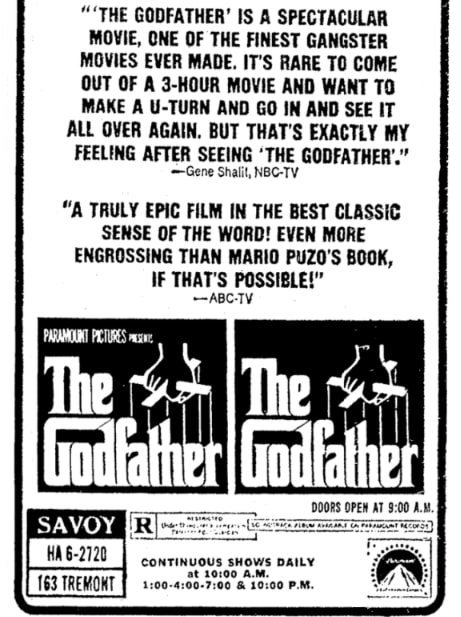
Mario Puzo penned the saga of a fictious Italian immigrant, Vito Corleone aka the “Godfather,” who made his great fortune in America by his role in an organized crime organization known as the Mafia.
Puzo’s novel, The Godfather, released in 1969, sold more than 21 million copies and was considered one of the most successful fiction books ever written, but to many Italian Americans the book was an all-out insult.
The negative depiction of Italian Americans fueled outrage. Puzo was labeled a traitor to his own people.
When Paramount Studios announced that Puzo’s work would go to screen, a battle broke out in the streets of New York and The Godfather movie almost did not get made.
The movie did get produced, of course, and is universally recognized as one of the greatest films ever made – receiving seven Academy Award nominations and winning five, including Best Picture. Here is a photo of Marlon Brando in the iconic title role, for which he won an Oscar for Best Actor.
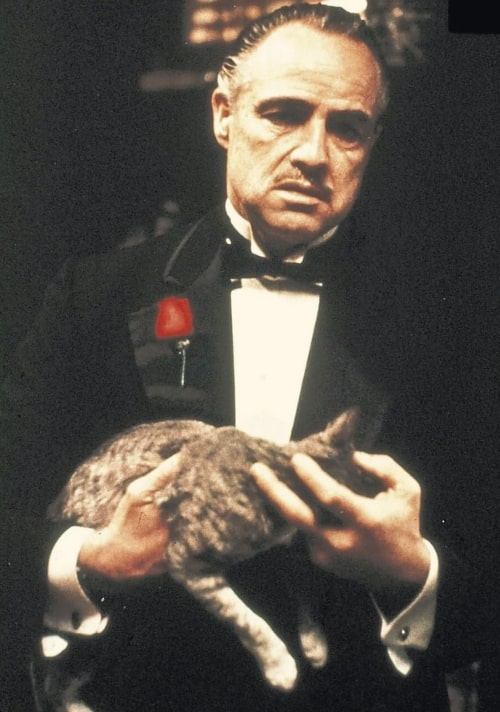
From the get-go, Paramount received threats over allegedly negative depictions of Italian Americans. A legion of politicians, civil leaders, judges, unions, and businessmen promised to derail production of the movie, calling it “Anti-Italian” and discriminatory.
Many of those warnings came handwritten, like this one in a Riverside Independent-Enterprise newspaper article.
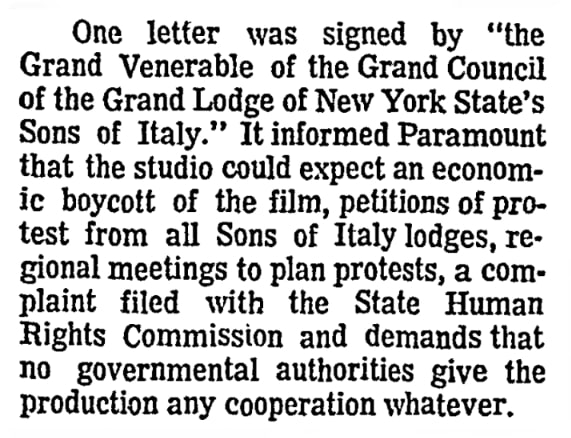
Robert Evans, the head of Paramount Productions, and his wife (legendary actress Ali McGraw) were the first to receive threats.
The film’s producer, Albert S. Ruddy, was next. When he came to New York to begin production, massive protests rose up including aggressive acts of intimidation.
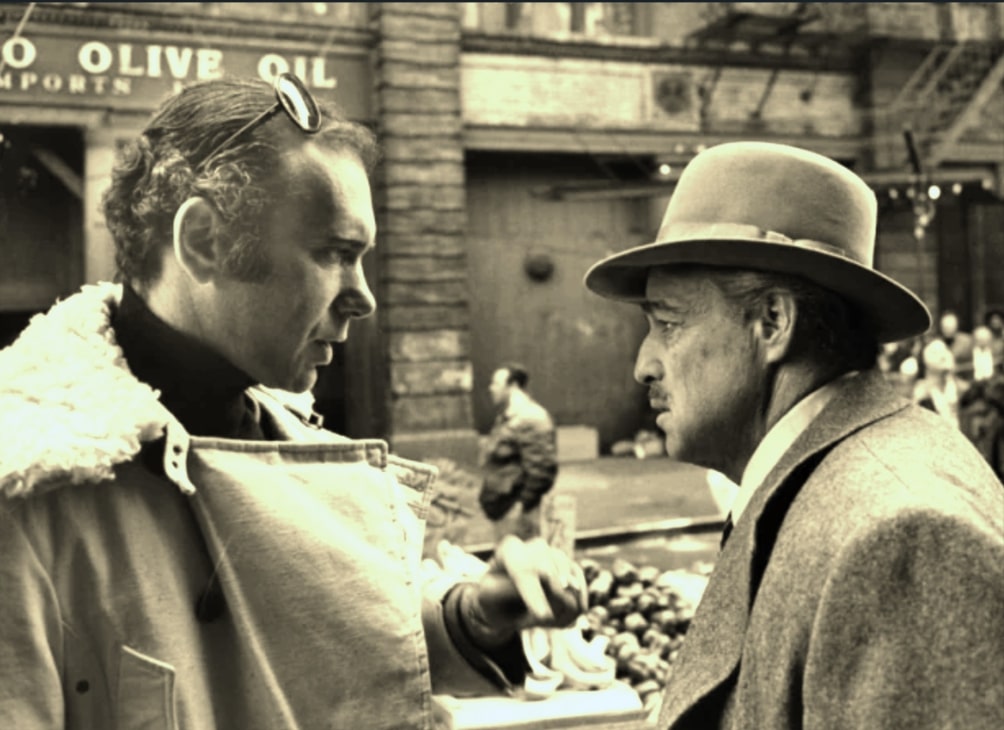
For example, a message was delivered warning that Ruddy “sleeps with the fishes” if he tried making the movie. To ease this atmosphere, Ruddy struck a deal with a Mafia boss. And once that compromise was made this Mafia movie was real as well as fictional. For example, many real Mafia members appeared in the movie, especially the extravagant wedding scene.
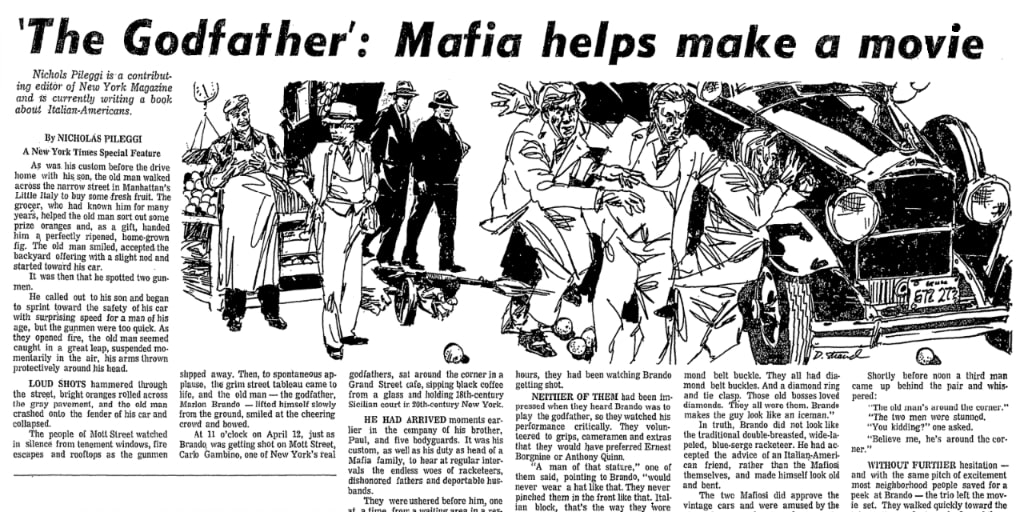
This article reports:
On Feb. 25 [1971] Al Ruddy went for help. He went in search of a godfather of his own. On that night he was driven to the Park Sheraton Hotel for his first meeting with Joseph Colombo Sr. and about 1,500 delegates of the Italian-American Civil Rights League.
Colombo was not only the boss of one of New York’s five Mafia families and thereby qualified for godfather status, but also the founder of the League, with which he had established himself as the dominant force in New York’s Italian-American community.
Ruddy approached Colombo confidently that night because he had previously sat in midtown restaurants with Colombo’s son, Anthony, and worked out a tentative accord. Ruddy had agreed to delete “Mafia,” “Cosa Nostra” and all other Italian words from the script. He had promised to allow the League to review the script and change anything it felt was damaging to the Italian-American image. And finally, he had agreed to turn over the proceeds of the film’s New York premiere to the League’s hospital fund.
…The moment he reached that agreement with Colombo, Ruddy’s troubles were over. Suddenly, with Colombo’s imprimatur, the threats of union woes evaporated. Planned demonstrations and boycotts were called off. A location for the godfather’s mall with a garden large enough for the huge wedding sequence was found on Staten Island, and Colombo’s men made a house-to-house tour of the neighborhood, smoothing ruffled Italian-American feathers.
Somehow, even the protest letters from Italian-American groups stopped once it was understood that an agreement had been reached with the League. When the [film] shooting actually began Ruddy found that with Colombo’s men around, instead of being harassed by neighborhood toughs, shaken down by various unions, visited by corrupt cops and generally treated like any other movie company in New York, “The Godfather” troupe was untouchable.
Ruddy’s alliance with Colombo and the Italian-American Civil Rights League gave him the backing to produce the move and begin filming in New York City. The League, formed in April 1970, had grown quickly in power and influence, with its supporters including prominent congressmen, celebrities, and the clergy.
And to boot – the League’s head spokesman was a Mafia chieftain who held a stronghold over all of New York during that time. His crew were powerful, and they held the keys to the city.
For example, one fellow, Stephen Aiello, who served as the League’s educational chairman, was later appointed by Jimmy Carter as assistant on ethnic/urban affairs. He also held the office of president of the New York City Board of Education.
Although Ruddy “made peace” with a real “godfather,” he kept the fictional Corleone family tree intact and future branches sprang up to create two “Godfather” sequels.
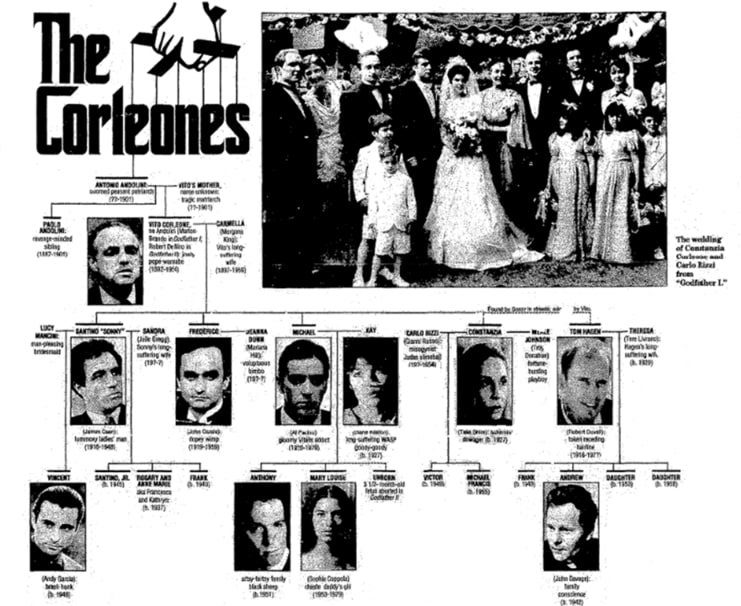
Much of my information has come from documentaries and interviews. The best dish came from the newspaper publications of New York Magazine editor and author Nicholas Pileggi, who served up all the scandal before the film premiere.
Also, in 2022 Paramount released a compelling series entitled The Offer, which depicts Ruddy’s experience in making the film. Although liberties were taken in this depiction, it is worth watching and quite entertaining.
Stay tuned! There is more to come about how The Godfather movie was saved by a League mobster. Plus, Frank Sinatra’s role in the drama!
Explore over 330 years of newspapers and historical records in GenealogyBank. Discover your family story! Start a 7-Day Free Trial
Note on the header image: Photo caption: James Caan, Robert Duvall, and Marlon Brando clown around. Duvall and Brando had an ongoing mooning contest. New York Post (New York, New York), 14 December 2008, page 72.
